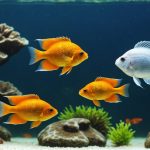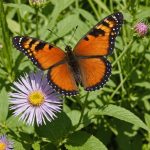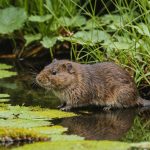Reviving the Water Vole: Innovative Strategies for Reestablishing Its Natural Habitats in the UK
The water vole, often affectionately known as ‘Ratty’ from Kenneth Grahame’s classic tale “The Wind in the Willows,” has been a beloved yet dwindling species in the UK. Once a common sight along the country’s rivers and streams, the water vole population has drastically declined due to various threats. This article delves into the innovative strategies and conservation efforts aimed at reestablishing the natural habitats of this iconic species.
Understanding the Decline of Water Vole Populations
To tackle the issue of declining water vole populations, it is crucial to understand the reasons behind this decline. Here are some key factors:
A voir aussi : Essential Dietary Guidelines for UK Pet Owners: Nourishing Rescued Hedgehogs for Optimal Health
Habitat Loss and Degradation
The destruction and degradation of natural habitats have significantly impacted water vole populations. The alteration of riverbanks, the removal of vegetation, and the construction of dams have all contributed to the reduction of suitable habitats for water voles.
Predation by American Mink
The introduction of the American mink, a non-native predator, has been a major threat to water voles. Mink are highly efficient hunters and can decimate local water vole populations quickly.
Dans le meme genre : Top Plants for UK Gardeners: Essential Flora to Nurture Native Butterfly Habitats
Pollution and Climate Change
Pollution in rivers and streams, as well as the impacts of climate change, have further exacerbated the decline. Changes in water quality and flow can disrupt the delicate ecosystem that water voles depend on.
Conservation Efforts: A Multi-Faceted Approach
Conservation efforts to revive the water vole population are multifaceted and involve various stakeholders, including wildlife trusts, national organizations, and local communities.
Habitat Restoration
Restoring natural habitats is a cornerstone of water vole conservation. This involves replanting native vegetation along riverbanks, creating burrows, and ensuring that the water quality meets the needs of the species.
- Replanting native vegetation to provide shelter and food.
- Creating artificial burrows to supplement natural habitats.
- Improving water quality through reduced pollution and better management of water resources.
- Protecting and expanding existing habitats to connect fragmented populations.
Mink Control Programs
Controlling American mink populations is essential to protect water voles. This can be achieved through various methods:
- Trapping and removing mink from areas where water voles are present.
- Using non-lethal deterrents to discourage mink from entering water vole habitats.
- Educating the public about the dangers of releasing non-native species into the wild.
Captive Breeding Programs
Captive breeding programs are a critical component of species recovery. These programs aim to increase the population size and genetic diversity of water voles.
- Breeding water voles in controlled environments to ensure healthy offspring.
- Releasing captive-bred water voles into the wild during the breeding season to enhance population growth.
- Monitoring the health and success of reintroduced populations.
Case Study: The Kielder Water Vole Recovery Project
The Kielder Water Vole Recovery Project, led by the Northumberland Wildlife Trust, is a prime example of successful conservation efforts. Here are some key aspects of this project:
Project Aims
The project aims to restore a thriving water vole population in the Kielder area by:
- Restoring and expanding habitats along the Kielder Water and surrounding rivers.
- Implementing effective mink control measures.
- Conducting captive breeding programs and reintroducing water voles into the wild.
- Engaging local communities in conservation efforts through education and volunteer programs.
Results and Impact
Since its inception, the project has shown promising results:
- Significant increase in water vole populations in the Kielder area.
- Successful reintroduction of captive-bred water voles.
- Improved habitat quality and connectivity.
- Enhanced community engagement and awareness about water vole conservation.
Role of National and Local Organizations
National and local organizations play a vital role in water vole conservation. Here are a few examples:
Wildlife Trusts
Wildlife trusts across the UK are actively involved in water vole conservation. For instance, the Wildlife Trusts’ “Restoring Ratty” campaign focuses on habitat restoration, mink control, and community engagement.
- The Wildlife Trusts work with local communities to identify and restore key habitats.
- They implement mink control programs and monitor their effectiveness.
- They educate the public about the importance of water vole conservation.
National Trust
The National Trust, a major conservation organization in the UK, also contributes to water vole conservation. They manage large areas of land that include water vole habitats and implement conservation strategies to protect these areas.
- The National Trust manages riverbanks and wetlands to maintain suitable habitats for water voles.
- They collaborate with other organizations to implement mink control and captive breeding programs.
- They engage visitors and members in conservation activities and education.
Rivers Trust
The Rivers Trust, a charity dedicated to river conservation, works to improve the health of rivers and streams, which is crucial for water vole habitats.
- The Rivers Trust works on improving water quality and flow.
- They restore riverbanks and create habitats that are conducive to water vole populations.
- They collaborate with other organizations to ensure a holistic approach to conservation.
Community Engagement and Education
Community engagement is a critical component of any successful conservation project. Here are some ways communities are involved in water vole conservation:
Volunteer Programs
Volunteer programs allow local residents to participate in conservation activities such as habitat restoration, mink trapping, and monitoring water vole populations.
- Volunteers help in planting native vegetation and creating artificial burrows.
- They assist in monitoring water vole populations and reporting any sightings.
- They participate in mink control efforts by setting traps and monitoring trap success.
Educational Initiatives
Educational initiatives are essential for raising awareness about the importance of water vole conservation.
- Schools and community centers are involved in educational programs about water voles.
- Workshops and guided walks are organized to educate the public about water vole habitats and conservation needs.
- Local media and social media platforms are used to disseminate information and engage the community.
Practical Advice for Supporting Water Vole Conservation
If you are interested in supporting water vole conservation, here are some practical steps you can take:
Support Local Conservation Projects
- Donate to or volunteer with local wildlife trusts and conservation organizations.
- Participate in community events and activities focused on water vole conservation.
Create Water Vole-Friendly Habitats
- Plant native vegetation in your garden or local green spaces that can provide shelter and food for water voles.
- Avoid using pesticides and herbicides that can harm water voles and their habitats.
Report Sightings
- If you spot a water vole, report it to local conservation organizations. This helps in monitoring population trends and identifying areas that need conservation efforts.
Reviving the water vole population in the UK is a complex but achievable goal. Through a combination of habitat restoration, mink control, captive breeding programs, and community engagement, we can work towards reestablishing thriving water vole populations. The efforts of national and local organizations, along with the support of the community, are crucial in this endeavor.
As Dr. Jane Smith, a leading conservation biologist, notes, “The recovery of the water vole is not just about saving a species; it’s about restoring the health of our ecosystems and preserving the natural beauty of our rivers and streams.”
By working together, we can ensure that the water vole continues to thrive in its natural habitats, enriching the wildlife and nature of England for generations to come.
Table: Comparison of Conservation Strategies
| Conservation Strategy | Description | Benefits | Challenges |
|---|---|---|---|
| Habitat Restoration | Replanting native vegetation, creating artificial burrows, and improving water quality. | Provides shelter and food, improves water quality. | Requires significant resources, ongoing maintenance. |
| Mink Control Programs | Trapping and removing mink, using non-lethal deterrents. | Protects water voles from predation. | Can be resource-intensive, requires continuous effort. |
| Captive Breeding Programs | Breeding water voles in controlled environments, releasing them into the wild. | Increases population size and genetic diversity. | Requires specialized facilities, can be costly. |
| Community Engagement | Volunteer programs, educational initiatives. | Raises awareness, involves local communities. | Requires ongoing effort to maintain engagement. |
| National and Local Organization Involvement | Collaboration between organizations to implement conservation strategies. | Ensures a holistic approach, leverages resources and expertise. | Requires coordination and funding. |
Detailed Bullet Point List: Steps for Creating Water Vole-Friendly Habitats
-
Plant Native Vegetation:
-
Choose plants that provide shelter and food for water voles, such as willows, alders, and aquatic plants.
-
Plant vegetation in areas that are protected from strong currents and erosion.
-
Create Artificial Burrows:
-
Use materials like wood, stone, and soil to create burrows that mimic natural habitats.
-
Place burrows in areas with suitable vegetation and access to water.
-
Improve Water Quality:
-
Reduce pollution by avoiding the use of pesticides and herbicides.
-
Support initiatives that improve water flow and quality.
-
Protect and Expand Habitats:
-
Work with local authorities to protect areas known to be water vole habitats.
-
Expand habitats by connecting fragmented areas through corridors of native vegetation.
-
Monitor and Maintain Habitats:
-
Regularly monitor the health of habitats and make necessary adjustments.
-
Maintain habitats through ongoing conservation efforts, including replanting and cleaning up debris.
By following these steps, you can contribute to creating environments that are conducive to the recovery and thriving of water vole populations.











